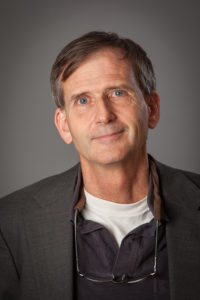Editor’s Note: Professor Stuart Hart, director of external relations and practicums for The Sustainable Innovation MBA, is — in addition to being recognized as a global authority on business strategy and its implications for addressing poverty, founder of the Enterprise for a Sustainable World, which hosts the Base of the Pyramid Global Network Summit.
In 2015, The University of Vermont (UVM)’s Grossman School of Business hosted the 2nd BoP Global Network Summit: “Sustainable Entrepreneurship From The Bottom Up”. We brought together corporate innovators, academics, entrepreneurs, community leaders, students, and BoP Global Lab leaders from more than 16 countries – all on campus at UVM.

This year, Professor Stuart Hart and friends are organizing the Third BoP Global Network Summit April 18 – 20, 2018 at the India Habitat Centre in New Delhi, India.
The 2018 Summit will include a field visit to initiatives to experience first-hand some of the leading-edge Base of the Pyramid (BoP) business initiatives in India. The field visit will serve to stimulate discussion and action during the Summit itself.
Companies and ventures cannot succeed at the BoP in isolation. It is in the strength of a strong and mutually aligned network and partner ecosystem including academia, government, development agencies, local entrepreneurs, and NGOs, that business will find the keys to success.
The 2018 BoP Global Network Summit will be focused around three such emerging strategies to more effectively reach and serve the Base of the Pyramid.
The three strategies are:
1) Beyond Environmental Degradation: Toward BoP Circular Economy Strategies
Most BoP ventures and initiatives have focused on the social aspects of sustainability while ignoring or deemphasizing the environment. Looking forward, disruptive new “leapfrog” BoP strategies may hold the key to pioneering a truly sustainable, circular economy.
2) Beyond Pipelines: Toward BoP Platform Engagement Strategies
Most BoP ventures and initiatives have focused on building single purpose supply chains and distribution models (pipelines), often with disappointing financial results. Looking forward, platform-based approaches, both cloud enabled and otherwise, may hold a key to building wider and a deeper value.
3) Beyond Selling to The Poor: Toward BoP Market Engagement Strategies
Most BoP ventures and initiatives have focused on developing low cost, “affordable” products and services, only to have them languish. Looking forward developing diverse and creative strategies for engagement and co creation may hold a key to successfully reaching and serving the BoP.
All three strategies hinge on creative ways to build more effective ecosystems and networks.
The objectives of the Summit are to explore the frontiers of these emerging strategies through plenary sessions featuring state-of-the art practice, followed by working sessions to build and accelerate momentum toward making them a reality.
Keynote speakers include Jonathon Porritt – the co-founder of Forum for the Future and Suresh Prabhu, Minister of Commerce and Industry, India, and many more.
See the full speaker line-up here. Sign up here.
Professor Hart’s video here.

 What is pitching? It is the art and skill of describing one’s project, entrepreneurial venture, or oneself in the minimal amount of words that communicates your message to the listener. For startups and entrepreneurs, it is a skill that can be developed and honed over time with practice and feedback.
What is pitching? It is the art and skill of describing one’s project, entrepreneurial venture, or oneself in the minimal amount of words that communicates your message to the listener. For startups and entrepreneurs, it is a skill that can be developed and honed over time with practice and feedback. This article was written by
This article was written by 
 However, he faced a number of issues in executing the Cape Wind vision. First, Gordon immediately ran into extreme and well-funded opposition from rich property owners along the coast who did not want to see their ocean view marred by wind turbines. People from the Koch Brothers to Bunny Mellon to Walter Cronkite joined forces behind the Alliance to Protect Nantucket Sound (APNS): a NIMBY (not-in-my-backyard) group flush with cash and influence who set out to discredit Gordon and undercut the validity of the Cape Wind project. Second, Cape Wind faced prominent political opposition. The influence and connections of the APNS board members wreaked havoc for Cape Wind’s political standing and extensive lobbying efforts damaged the progress of what would have otherwise been a highly embraced endeavor. Finally, Cape Wind was an expensive undertaking – one whose fluctuations in cost had significant impact on its timeline.
However, he faced a number of issues in executing the Cape Wind vision. First, Gordon immediately ran into extreme and well-funded opposition from rich property owners along the coast who did not want to see their ocean view marred by wind turbines. People from the Koch Brothers to Bunny Mellon to Walter Cronkite joined forces behind the Alliance to Protect Nantucket Sound (APNS): a NIMBY (not-in-my-backyard) group flush with cash and influence who set out to discredit Gordon and undercut the validity of the Cape Wind project. Second, Cape Wind faced prominent political opposition. The influence and connections of the APNS board members wreaked havoc for Cape Wind’s political standing and extensive lobbying efforts damaged the progress of what would have otherwise been a highly embraced endeavor. Finally, Cape Wind was an expensive undertaking – one whose fluctuations in cost had significant impact on its timeline.